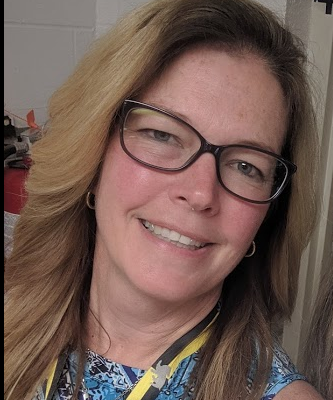We are experiencing a renaissance of information and ideas with our country’s leading educational institutions like Harvard, MIT, and Stanford offering Massive Open Online Courses (MOOCs). The introduction of Apple’s iPad released April 3, 2010, has ushered in new era of popular interest in the quality of software development in all sectors of life, including for teaching and learning. Emerging technologies are impacting the role of the teacher, the role of schools and the role of libraries. Some have theorized that emerging technologies are changing learning itself, spurring cognitive development by means of pushing us to use multiple parts of our brains to process and synthesize images, audio, and textual information critically and effectively. The digital age is producing information in various formats at an exponential rate that is almost impossible to grasp. The challenge of this is both daunting and exciting. The implications of the digital age and globalization in the areas of teaching, learning, and scholarship are as of yet unknown.
Exploring emerging technologies and leveraging them to support our students and learning goals is a uniquely individual process. We are all looking to develop our best classroom workflow and to create our own micro ecosystem of effective tools. Part of the process is to identify the teaching methodologies that best match our natural style and that can be used both for establishing ritual and creating variety in the learning experiences that we design and create in our classrooms. We need everyone engaged and willing to take ownership for the next generation of emerging teaching practices. How do we balance fostering creativity and innovation, which require experimentation and freedom, with fostering rigor and scholarship, which often require standardization and disciplined study? To be clear, I do not think that we should abandon all traditional models of teaching and learning, but rather we need to actively ponder and examine how we can use emerging technologies to enhance learning and ultimately, to play an active role in the transformation of instructional approaches to create new models of inquiry, teaching, and learning. Also, we need to actively search out opportunities to effectively sustain our own motivation and effort on this quest. We need all teachers to be teacher-leaders and to engage in creating their own self-directed learning journeys.
Here are a few ways to begin your self-directed learning journey:
-
Research and apply for a grant. Take a look at MassCUE’s Request for Proposals. The deadline is January 1, 2014. Applying for a grant encourages you to dream bigger, and then plan how to integrate additional classroom resources in a meaningful way.
-
Attend a local edcamp professional development opportunity. Experience what self-driven teacher professional development really looks like. The EdCampBoston Facebook page does a great job of publicizing area edcamp opportunities that are usually free. The passion and enthusiasm at these events are unparalleled.
-
Attend workshops that focus on educational leadership or other broad educational theories and methodologies such as the flipped classroom or blended learning, rather than on specific content-based or common core-related professional development offerings.
-
Visit a colleague’s classroom and meet with them afterwards to provide feedback and observations.
-
Co-design an interdisciplinary lesson unit with a colleague.
-
Visit another school that has been recognized as a model school and provide feedback and reflections to your administration.
-
Enroll in a MOOC. Coursera, EdX, or Udacity have many offerings on a variety of topics, and taking an online course will give you insight into how you may have students utilize online materials and interactive tools. Many of the courses have open enrollment periods and rolling deadlines so you can truly learn at your own pace and convenience.
-
Attend a webinar. Many software products that you may be already using offer webinar training sessions that are free. Learning more about tools that you are already using may solve some everyday challenges and allow you to go “deeper” with your integration of a particular tool.
-
Attend a learn launch event, and meet the new generation of software developers who are willing to reach out and build the software that meets your needs.
-
Pick an educational topic to research, write an article and submit it as an online article or blog post.
-
Design and present your own workshop at a conference.
-
Participate in a Twitter chat. There are now weekly educational Twitter chats taking place by teacher leaders on a variety of educational topics. The connections that you make in participating in just one Twitter chat can help you sustain your drive and enthusiasm to meet daily challenges with the support of educator colleagues outside of your own teaching institution.
-
Examine pedagogical theories and models that support student-centered learning, like constructivist learning theories and Understanding by Design, advocated by Jay Mctighe and Grant Wiggins.
-
Research outside the educational field and explore design thinking, problem-based learning, or the engineering process. Outside fields that focus on a product-oriented process can inspire you to support your students in demonstrating their understanding in different ways.
-
Learn about social, cultural and intellectual entrepreneurship. Be ready to support and empower your students to go where the knowledge is and where they are able to make a positive impact, whether it be down the street or online. The Intellectual Entrepreneurship Consortium at University of Texas, Austin has done a nice job of defining intellectual entrepreneurship and Yong Zhao’s latest book, World Class Learners, will also assist you in the exploration of how the term “entrepreneurship” has broadened recently to include experiential learning in new ways that can have an impact at a local, regional, or global level.
-
Explore the maker movement and gamification in education. These concepts touch on the importance of student engagement and motivation in authentic learning.
-
Join the Educator’s PLN ning site, the personal learning network for educators, or other similar professional ning sites. Join a few groups of interest and engage with other educators on a more informal basis.
-
Learn something new. Reflect and apply what you learned about the strengths and challenges of your own learning style to design your own instructional lesson units.
This list is not meant to be exhaustive or prescriptive, but simply to be a place to start. Make learning happen your way on your own time. Enlist a colleague. It will be a more powerful and lasting experience. Please share the ways that you have engaged in your own self-directed learning journey.
About the Author:
Wendy Cotta is the Director of Technology Integration at Worcester Academy in Worcester, MA. She earned a M.Ed. in Technology in Education from Lesley University in 2002. She worked as a public high school Spanish teacher for 10 years. She has spent the last 6 years in private schools, supporting teachers with the integration of technology. On Twitter, she is @edtech2innovate.
 Print this post
Print this post



